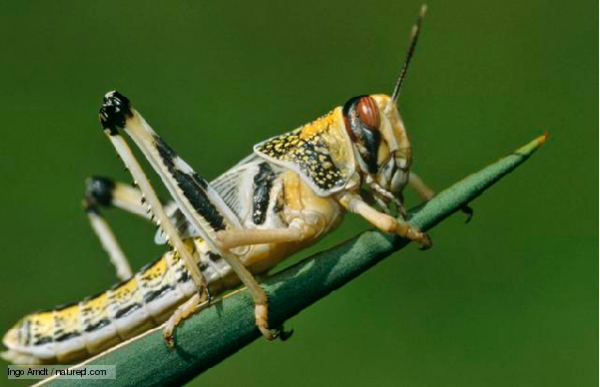Scientists Find Insight in Tropical Insects
| Paula Marie Navarra | | Jul 31, 2014 11:27 AM EDT |
From a massive collection of 20-million-year-old amber insects, scientists are finding great insights into the ancient tropical place they inhabited.
Sam Heads, a paleontologist at the Illinois Natural History Survey, said that amber grasshoppers found on the collection are very rare and were extraordinarily well-preserved.
Like Us on Facebook
One of the grasshoppers found was a pygmy locust; it is the size of a rose thorn that lived 18 to 20 million years ago and fed on moss, algae and fungi.
It represents the intermediate stage of evolution in the life of Cladonotinae, the subfamily of locusts. The most ancient kind of this group had wings, which their modern counterparts do not have.
The pygmy locust appears to have vestigial wings; these are remnant structures that had already lost their primary function.
The pygmy locust is named Electrotettix Attenboroughi which came from electrum, the Greek word of amber and tettix, the Greek word for grasshopper.
Attenboroughi came from David Attenborough, who is an English broadcaster and naturalist.
Heads explained that he named the pygmy locust after Attenborough because of the broadcaster's interest in amber.
He was also one of Heads' childhood heroes and remains to be his hero, so the scientist decided to name the species in his honor.
Heads said that fossil insects can provide lots of insight into the evolution of specific traits and behavior and give insights on the history of the period
He stressed that they are a tremendous resource for understanding the ancient world, ancient ecosystem and ancient clients.
Even perhaps better than dinosaur bones, he explained.
©2015 Chinatopix All rights reserved. Do not reproduce without permission
EDITOR'S PICKS
-

Did the Trump administration just announce plans for a trade war with ‘hostile’ China and Russia?
-

US Senate passes Taiwan travel bill slammed by China
-

As Yan Sihong’s family grieves, here are other Chinese students who went missing abroad. Some have never been found
-

Beijing blasts Western critics who ‘smear China’ with the term sharp power
-

China Envoy Seeks to Defuse Tensions With U.S. as a Trade War Brews
-

Singapore's Deputy PM Provides Bitcoin Vote of Confidence Amid China's Blanket Bans
-

China warns investors over risks in overseas virtual currency trading
-

Chinese government most trustworthy: survey
-

Kashima Antlers On Course For Back-To-Back Titles
MOST POPULAR
LATEST NEWS
Zhou Yongkang: China's Former Security Chief Sentenced to Life in Prison

China's former Chief of the Ministry of Public Security, Zhou Yongkang, has been given a life sentence after he was found guilty of abusing his office, bribery and deliberately ... Full Article
TRENDING STORY

China Pork Prices Expected to Stabilize As The Supplies Recover

Elephone P9000 Smartphone is now on Sale on Amazon India

There's a Big Chance Cliffhangers Won't Still Be Resolved When Grey's Anatomy Season 13 Returns

Supreme Court Ruled on Samsung vs Apple Dispute for Patent Infringement

Microsoft Surface Pro 5 Rumors and Release Date: What is the Latest?










